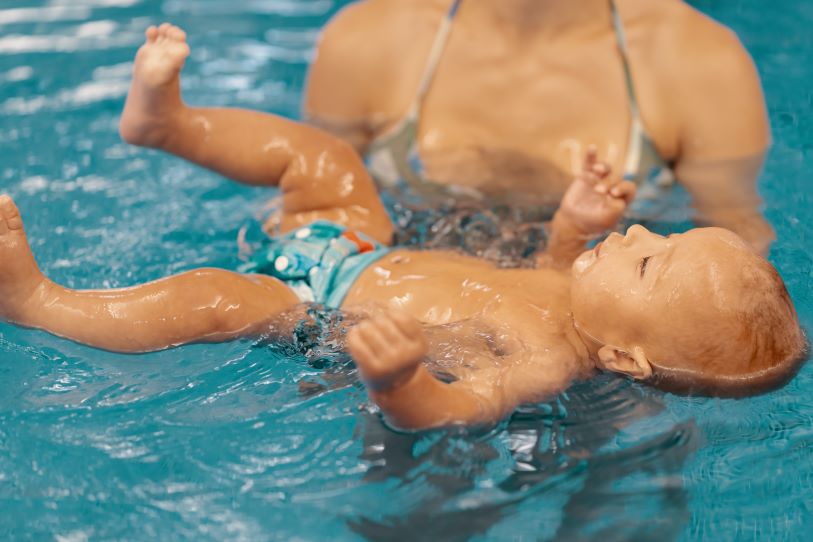
Florida is renowned for its beautiful weather and extensive coastline, making water activities a significant part of the state’s culture. However, this brings a hidden danger – drowning – especially among children. Understanding the scope of this issue, and raising awareness are essential steps towards prevention of child drownings in Florida
Drowning Statistics in Florida
Drowning rates in Florida are alarmingly high, and the state has led the nation in child drowning deaths for years. According to the Florida Department of Children and Families, at least 97 kids drowned to death in 2023, continuing a disturbing trend:
-
2022 – 93 drowning deaths
-
2021 – 99 drowning deaths
-
2020 – 69 drowning deaths
-
2019 – 65 drowning deaths
-
2018 – 88 drowning deaths
-
2017 – 82 drowning deaths
Per data from the Center for Disease Control (CDC), since 2018, Florida has been ranked the highest in the United States for unintentional drowning death rate among children ages 1 to 4 years old, and had the highest unintentional death rate of 3.19 per 100,000 population among children 0 – 9 years of age compared to other states. Unfortunately, these tragedies often occur silently and swiftly, often in the presence of adults who are unaware until it’s too late. Furthermore, the CDC reports that three children die every day as a result of drowning. Incredibly, the majority of these incidents happen in home swimming pools.
Factors contributing to Child Drownings (per the CDC)
A number of factors contribute to the high rates of child drownings in Florida:
-
Lack of Supervision: Drowning can happen quickly and quietly ANYWHERE there is water, especially to unsupervised children. It happens in pools, lakes, ponds, the ocean and even bathtubs. Young children CANNOT be left alone around water.
-
Location & Accessibility: The highest risk locations for drowning vary by child age:
-
Among infants under 1 year-old, two-thirds of all drownings occur in bathtubs.
-
In children ages 1 – 4, most drownings happen in home swimming pools.
-
For children 5 – 14, 40% of drownings occur in “natural” water (the ocean, lakes, rivers), and about 30% occur in pools.
-
-
Not being able to Swim/Lack of Water Safety Awareness: Enrolling in children in swimming lessons at an early age reduces the risk of drowning and also teaches good water safety habits!
-
Missing/Ineffective Fences around Water: Proper pool fencing can prevent young children from gaining access to pools without a caregivers’ awareness. A 4-sided isolation fence which separates the pool area from the house and yard reduces a child’s risk of drowning by 83% compared to a 3-sided property-line fencing!
Demographics and Drowning
Drowning incidents disproportionately affect certain demographics:
- African American children ages 5 – 19 drown at rates 5.5 times higher than White children.
- Black children are more likely to drown in public pools, while white children are more likely to drown in residential pools.
- American Indian/Alaskan Native children also have higher drowning rates than White children.
- 79% of children in households with incomes less than $50,000 have few or no swimming skills.
- Stats per the CDC and Stop Drowning Now.
Preventing Child Drownings
Raising awareness about the dangers of drowning and promoting comprehensive water safety practices are crucial, especially in Florida. With respect to legislation, Florida has not enacted new laws since 2000’s Residential Swimming Pool Safety Act, that required residential pools built after October 2000 to have a safety feature such as locked pool covers or alarms on doors leading to the pool. In 2024, a number of new laws are up for consideration, including the following:
-
SB 544: Swimming Lesson Voucher Program: This law would give FREE swim lesson vouchers to kids 4 and under in families below 200% of the federal poverty level, – about $60,000 for a family of four. The bill has unanimously passed several Senate Committees already.
-
SB 274: The Kareem Angel Green Act: Would require organizations like summer camps or schools that take kids to bodies of water to get parents to attest, in writing, whether their children can swim. Kids at risk of drowning would be required to wear flotation devices.
-
It’s named after a 5-year-old Osceola County resident who drowned at age 5 on a school field trip to a swimming pool in 2006.
-
-
HB 719/SB 706: Residential Swimming Pool Requirements: Would require homeowners to install at least one safety barrier to their pool before they can sell their home, regardless of what year the pool was built.
Becoming the Gold Standard for Water Safety
Through legislation like the Florida Residential Swimming Pool Safety Act, and requiring features such as secure barriers, pool alarms, and safer drain covers, Florida is making significant strides in crating environments where children can splash and swim with less risk. Additionally, local efforts across the state to promote water safety education highlight Florida’s commitment to not just respond to drowning incidents, but to prevent them proactively. It’s a commitment that involves lawmakers, community leaders, and every family that loves the water. Together, we can ensure that our pools and beaches remain places of joy, not of loss, making Florida a national leader in the prevention of child drownings.
Has Your Family Suffered due to an Accidental Drowning? Talk to the Experts At GOLDLAW
The Accidental Drowning Lawyers at GOLDLAW will take the time to investigate the details of your case and work alongside you to determine the most advantageous legal strategy to pursue and obtain the most compensation possible for your injuries or loss of life due to the negligence of someone else. To find out more, “Choose the 2’s,” and call GOLDLAW at 561-222-2222, or click here for a COMPLIMENTARY case evaluation.



